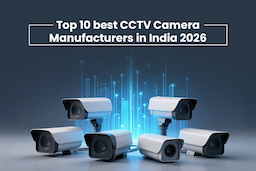Conventional wisdom has it that packaging performs three functions: to preserve the value of a product during its shelf life, to promote the face of a product and finally to protect unit loads during transit in the supply chain journey. However, a new paradigm is emerging, wherein packaging shall perform a completely new function: it shall perform.
Smart packaging uses technology to optimize the packaging process. Grand View Research pegs the global smart packaging market at $26.7 billion by 2024, up from $10.8 billion back in 2015, with a compound annual growth rate (CAGR) of 10.6% from 2016 to 2024.
The reasons for this phenomenal growth are evolving customer lifestyle, rapid urbanization, and unprecedented technological growth that makes it possible for manufacturers to leverage content to add value to customers and enables the track and trace of unit loads all along the F2C, i.e. factory to customer supply chain journey.
What Are the Benefits of Smart Packaging?
Manufacturers have leveraged traditional packaging solutions to good effect to date. Therefore the emergence of smart packaging mandates an objective assessment of the additional value that it creates for manufacturers across diverse industry verticals by leveraging technology.
• Map End-User Trends – With smart packaging manufacturers can leverage the products to establish a stronger connection with customers through technology. This improves customer trust, which builds stronger brands. For instance, a sensor inserted into the packaging of the product can allow manufacturers to map the flow of the product through different stages in the distribution channel before it ultimately reaches the end-user. It makes enormous good sense to suggest that such technology integration into packaging can enable manufacturers to collect and map valuable data on user trends.
• A Better Degree of Sustainability – Smart packaging can allow users to support reusability and recycling initiatives in packaging. For instance, manufacturers that look to create a circular and closed-loop economy for reverse logistics of their packaging can track and trace the movement of used packaging materials, plan and optimize the logistics routes and identify waste collection points to create the paths for used packaging materials to return. This, in turn, can facilitate the reuse and recycling of packaging and thus reduce wastage; one of the single most important challenges facing manufacturers in the domain of industrial packaging.
• Streamlining the Supply Chain – Smart packaging can ensure lower wastage of the products. Measures like temperature sensing and anti-tampering if embedded into smart packaging can boost efficiencies in supply chain management. For instance, think of an FMCG enterprise that may look to use temperature-sensitive packaging for its product line of edible items with a short shelf life like curds and yogurts with a color scale to indicate the freshness of the product for consumption. It can reasonably simplify warehousing and downstream distribution and sales of inventories of such perishable goods on a first-in-first-out (FIFO) basis.
What Are the Types of Smart Packaging?
Depending on the two major dimensions of the functional value it delivers, smart packaging may be broadly classified into two categories as follows:
- Active Packaging: This type of smart packaging interacts with the contents of the package to help improve shelf life or its quality. An example is the sorbate-releasing LDPE (Low-Density Polyethylene) film that helps add anti-microbial activity to cheese packaging.
- Intelligent Packaging: This kind of smart packaging monitors and diagnoses the health of the package contents and communicates timely information to users. An example is Diageo’s tamper detection NFC chips. If any counterfeiter tries to open the product before it reaches the customer, then the chip tears off, revealing tampering with the product.
Such packaging innovation goes beyond merely protecting the product. It can detect and monitor various metrics like temperature and humidity and integrate moisture repellent properties to keep goods dry. It can allow heating or cooling a product by touch. Majorly intelligent packaging uses technologies like AR/VR and NFC codes to improve customer interaction and deliver a superior user experience.
What are the Use Cases for Smart Packaging?
Given the new avenues of performance that smart packaging creates for manufacturers by integrating technology, innovators and early adopters in the food & beverage and healthcare verticals have begun leveraging it. Some of the most unique use cases of smart packaging in these verticals are as follows:
1. Connected Whisky Bottles
Diageo has leveraged smart technology to ensure that no counterfeiting or tampering occurs when the bottle moves from the production warehouse to the consumer’s home.
It uses an ultrathin film of electronic sensors that reveals if the bottle has been opened before and its location in the entire supply chain. The NFC chips convey meaningful information to support the company’s anti-counterfeiting efforts of its range of liquor bottles.
2. AR Packaging
Cadbury Quacksmack ensures that users can play a smartphone game when enjoying a bar of chocolate. It uses Blippar image-recognition technology. A mobile scans the packaging which launches a game.
This use case is the first known instance of a chocolate brand using a blend of interactivity and augmented reality in this innovative and fun way.
3. Verifying Freshness of Food
The intelligent ink used on the package by Freshcode gradually changes color. This color indicates the freshness level of the packaged poultry products. If the indicator changes to black, it means that the product is no longer safe for consumption
Such innovation in packaging ensures that users can track product freshness from processing until its final consumption. Distribution chains can enhance their credibility by dealing in the freshest poultry produce and facilitate food safety controls easily.
4. Patient Care Made More Effective
E Ink’s PhutureMed helps a patient to improve adherence to drug therapy efficacy. The solution can sense when the pack is opened. It also monitors when the patient has taken a pill from the blister pack. It helps patients to take the medication on time and trigger an alert in case the patient misses out on the prescribed medicine on time.
5. Verifying Product Shelf-Life
Mondi’s Sanocoat packaging prevents microbial growth on food items. It prevents accelerated product contamination with its anti-microbial packaging solution
As a result, it prevents germ growth and inhibition of mold. By removing bacterial infestation like e.coli, the hygiene of the product can be maintained. As a result, the products’ shelf life is enhanced substantially.
Looking Forward: Ushering a bold new future in packaging
While smart packaging is still in a nascent stage and constrained majorly to the verticals of food & beverage, healthcare and pharmaceuticals, the rapid proliferation of technologies like NFC and IoT is enabling more and more enterprises to take cognizance of the immense potential it holds. As more enterprises look forward to adopting smart packaging eventually in the long term, those that shall do it now are guaranteed to harvest the returns of a first mover’s advantage by creating a key brand differentiator.




